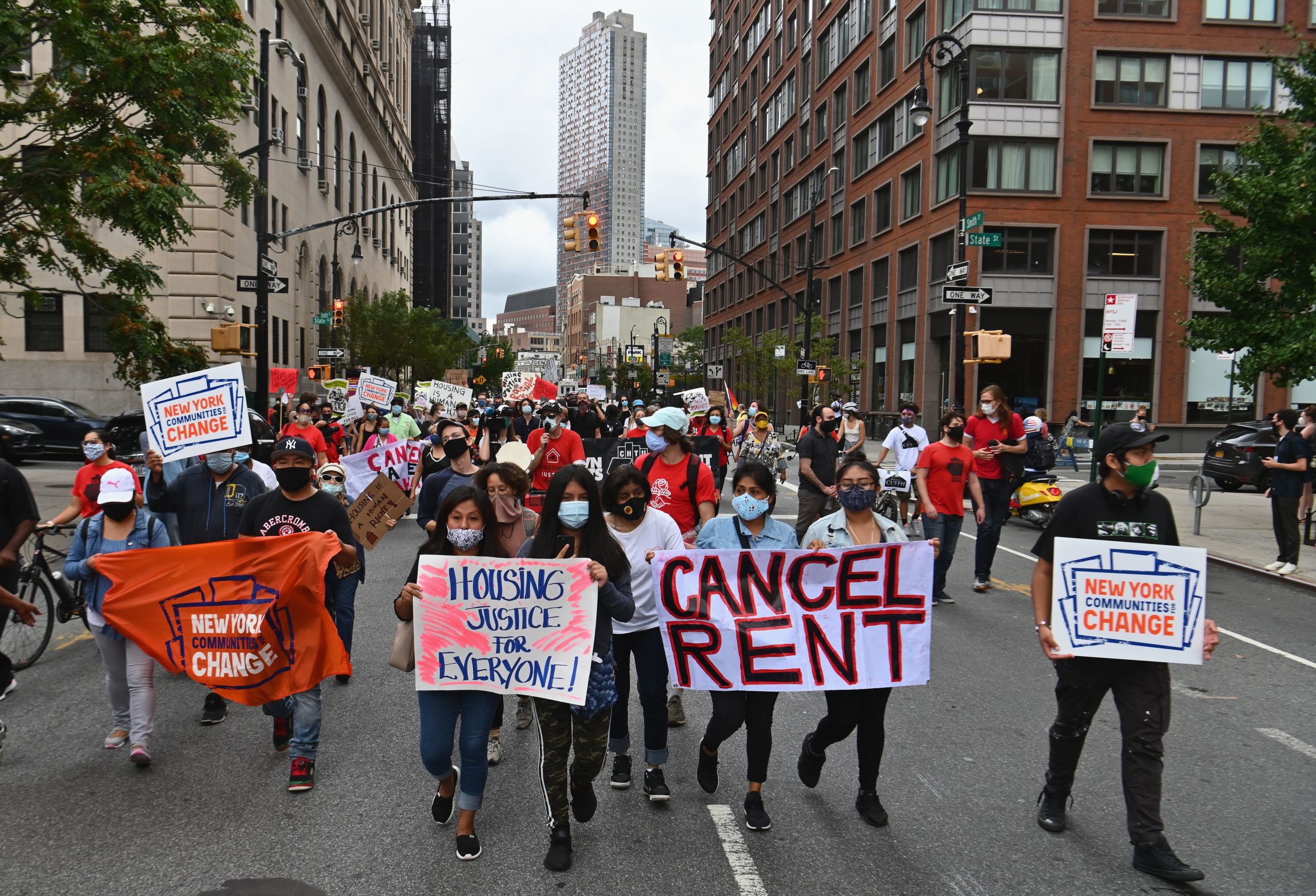Judges Can Help Stop The Eviction Crisis
The Point: As many as 40 million people in America are at risk of losing their homes. Judges can play a critical role in stopping the ongoing eviction crisis. Judges have the power to keep people in their homes: Before a landlord can evict someone, they must go to court and ask a judge to […]

The Point:
As many as 40 million people in America are at risk of losing their homes. Judges can play a critical role in stopping the ongoing eviction crisis.
Judges have the power to keep people in their homes:
- Before a landlord can evict someone, they must go to court and ask a judge to order an eviction. But judges often have the discretion to keep families in their homes. They can, for example, reduce rent or craft repayment plans instead of ordering the eviction.
- In St. Louis, for example, city courts suspended evictions based on non-payment of rent through the end of January 2021, pausing 1,900 pending eviction claims.
- Earlier this month, community members in Jackson County, Missouri, successfully pushed a local judge to suspend evictions for two weeks. Tara Raghuveer, director of housing rights group KC Tenants, explained on Appeal Live how organizers can replicate this action in their own communities.
- In August 2020, the Virginia Supreme Court declared a judicial emergency and suspended evictions.
Evictions are a public health emergency:
- Efforts to halt or slow evictions through use of moratoriums during the pandemic have been a patchwork across localities; states; and, belatedly, the federal government. Even the federal moratorium issued by the Centers for Disease Control and Prevention has been criticized for its limits, the lack of enforcement, and the bureaucratic process needed to seek its protections.
- People who do lose their homes are more likely to contract COVID-19. This is so, professors Emily Benfer, Gregg Gonsalves, and Danya Keene wrote, because “eviction results in transiency, homelessness, and crowded residential environments that increase both the frequency and proximity of contact with others and make it impossible to comply with pandemic mitigation strategies.”
- Pandemic evictions have been linked to more than 10,000 COVID-19 deaths and 500,000 cases. A new study suggests that “if a national moratorium on evictions and utility cutoffs had been implemented at the beginning of the pandemic, the rate of death would have dropped nearly 56 percent compared to if no policies were ever implemented.”
Dive Deeper
- How Renters Are Fighting to Stop the Eviction Machine. Tara Raghuveer tells The Appeal Live how the community members of KC Tenants are helping people fight evictions and stay in their homes.
- The Coming Wave of Evictions Will Significantly Worsen America’s COVID-19 Crisis. The CDC must immediately extend its emergency eviction moratorium to give the Biden administration and Congress time to provide additional emergency rental assistance.
- The Pandemic Hasn’t Stopped Landlords from Evicting Tenants—and It’s about to Get Much Worse. Landlords have continued forcing renters out of their homes, despite a patchwork of protections from federal and local governments. Now, with the CDC moratorium set to expire on Dec. 31, millions of Americans could be evicted.
- A Judge Suspended Evictions in Kansas City, Advocates Say That’s Not Enough. The order halts evictions in the city and surrounding area until Jan. 24, but a housing rights group says greater protections are needed for the most vulnerable during the COVID-19 pandemic.
- Eviction Crisis Brings Urgency to Local Judge Elections. A heated race for New Orleans First City Court Judge highlighted the power judges have to limit evictions, as millions of Americans are at risk of losing their homes.

